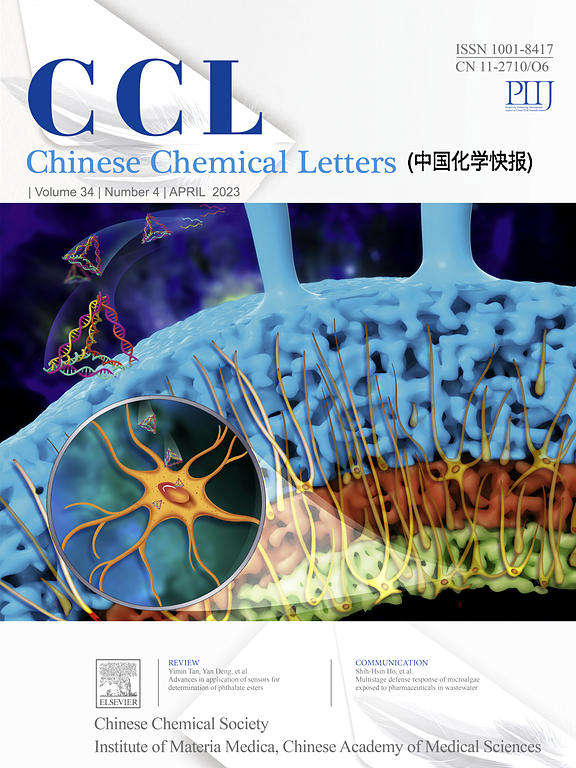Decorating CsPbBr3 with In2O3 seeds to build intimate direct Z-scheme heterojunction for promoted photocatalytic CO2 reduction
IF 8.9
1区 化学
Q1 CHEMISTRY, MULTIDISCIPLINARY
引用次数: 0
Abstract
Building heterojunctions has proven its efficiency in promoting charge separation for highly efficient photocatalysis. However, most heterojunctions often suffer from inadequate interfacial contact between the two semiconductor phases, hindering charge separation and producing suboptimal photocatalytic performance. Herein, leveraging the soft lattice feature of halide perovskite, we intentionally introduced In2O3 nanoparticles as seeds in situ during the crystallization process of CsPbBr3, constructing In2O3/CsPbBr3 heterojunction with intimate and abundant interface contact. Through in situ X-ray photoelectron spectroscopy and band structure analysis, we revealed the creation of a direct Z-type heterojunction that combines the catalytic advantages of both CsPbBr3 and In2O3 for CO2 reduction and water oxidation, respectively. The enhanced interfacial contact further enables this heterojunction to separate more photogenerated charges and prolong carrier lifetime effectively. Benefiting from the improved charge utilization, as well as the chemisorption and activation of CO2 molecules on the catalyst, the In2O3/CsPbBr3 heterojunction exhibits significantly enhanced performance in CO2 photoreduction, achieving a 3.8-fold increase in the photoelectron consumption rate as compared to that of CsPbBr3 alone. This study emphasizes the critical importance of a tight and rich heterojunction interface in achieving efficient photocatalytic reactions.

用In2O3种子修饰CsPbBr3,建立亲密的直接z型异质结,促进光催化CO2还原
构建异质结在促进高效光催化中的电荷分离方面已被证明是有效的。然而,大多数异质结经常遭受两个半导体相之间的界面接触不足,阻碍电荷分离和产生次优的光催化性能。本文利用卤化物钙钛矿的软晶格特性,在CsPbBr3的结晶过程中,有意将In2O3纳米粒子作为种子原位引入,构建了具有紧密和丰富界面接触的In2O3/CsPbBr3异质结。通过原位x射线光电子能谱和能带结构分析,我们发现了一个直接的z型异质结,它结合了CsPbBr3和In2O3分别对CO2还原和水氧化的催化优势。增强的界面接触进一步使该异质结能够分离更多的光生电荷并有效延长载流子寿命。得益于电荷利用率的提高,以及CO2分子在催化剂上的化学吸附和活化,In2O3/CsPbBr3异质结的CO2光还原性能显著增强,光电子消耗率比CsPbBr3单独的光电子消耗率提高了3.8倍。这项研究强调了紧密和丰富的异质结界面在实现高效光催化反应中的关键重要性。
本文章由计算机程序翻译,如有差异,请以英文原文为准。
求助全文
约1分钟内获得全文
求助全文
来源期刊

Chinese Chemical Letters
化学-化学综合
CiteScore
14.10
自引率
15.40%
发文量
8969
审稿时长
1.6 months
期刊介绍:
Chinese Chemical Letters (CCL) (ISSN 1001-8417) was founded in July 1990. The journal publishes preliminary accounts in the whole field of chemistry, including inorganic chemistry, organic chemistry, analytical chemistry, physical chemistry, polymer chemistry, applied chemistry, etc.Chinese Chemical Letters does not accept articles previously published or scheduled to be published. To verify originality, your article may be checked by the originality detection service CrossCheck.
 求助内容:
求助内容: 应助结果提醒方式:
应助结果提醒方式:


